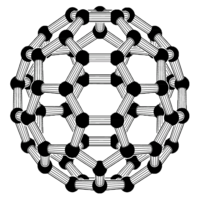Optical properties of carbon nanotubes

Okay kiddo, have you ever looked at a straw, maybe a really thin one, and noticed how light seems to shine through it? Well, carbon nanotubes are a bit like those straws, but they're even thinner and made of different materials.
Now, light is made up of something called photons, and when it hits an object like a carbon nanotube, it can bounce off, get absorbed or pass right through it. The way that light interacts with a carbon nanotube and how much of it gets absorbed or transmitted depends on different things like the size and shape of the nanotube as well as the type of material it's made of.
There are different kinds of carbon nanotubes, some are metallic and some are semiconducting. This means that they conduct electricity differently. Metals are good at conducting electricity, while semiconductors only conduct electricity under certain conditions.
When light hits a metallic carbon nanotube, it usually gets absorbed, but not all of it. Some of the light gets reflected off, bouncing back in the direction it came from. This means that metallic carbon nanotubes aren't very good at transmitting light.
Semiconducting carbon nanotubes, on the other hand, can absorb and transmit light depending on the size and shape of the tube. When a semiconducting nanotube absorbs light, it can become excited, meaning that its electrons move around and start conducting electricity. This can be useful for things like solar cells, where you want the carbon nanotubes to absorb as much light as possible and turn it into electricity.
Overall, the optical properties of carbon nanotubes are really important for a lot of different applications in areas like electronics, optics, and energy. By understanding how light interacts with these tiny tubes, scientists can design new and better materials that can do all kinds of cool things.
Now, light is made up of something called photons, and when it hits an object like a carbon nanotube, it can bounce off, get absorbed or pass right through it. The way that light interacts with a carbon nanotube and how much of it gets absorbed or transmitted depends on different things like the size and shape of the nanotube as well as the type of material it's made of.
There are different kinds of carbon nanotubes, some are metallic and some are semiconducting. This means that they conduct electricity differently. Metals are good at conducting electricity, while semiconductors only conduct electricity under certain conditions.
When light hits a metallic carbon nanotube, it usually gets absorbed, but not all of it. Some of the light gets reflected off, bouncing back in the direction it came from. This means that metallic carbon nanotubes aren't very good at transmitting light.
Semiconducting carbon nanotubes, on the other hand, can absorb and transmit light depending on the size and shape of the tube. When a semiconducting nanotube absorbs light, it can become excited, meaning that its electrons move around and start conducting electricity. This can be useful for things like solar cells, where you want the carbon nanotubes to absorb as much light as possible and turn it into electricity.
Overall, the optical properties of carbon nanotubes are really important for a lot of different applications in areas like electronics, optics, and energy. By understanding how light interacts with these tiny tubes, scientists can design new and better materials that can do all kinds of cool things.
Related topics others have asked about:
Allotropes of carbon,
Buckypaper,
Carbon nanotube,
Carbon nanotubes in photovoltaics,
Graphene,
Hiromichi Kataura,
Mechanical properties of carbon nanotubes,
Nanoflower,
Potential applications of carbon nanotubes,
Resonance Raman spectroscopy,
Selective chemistry of single-walled nanotubes,
Vantablack
